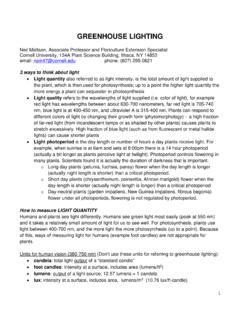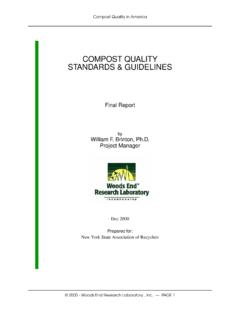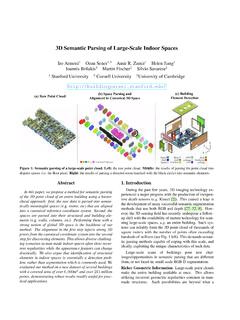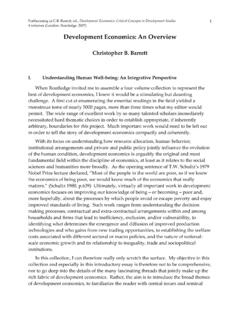Transcription of FERTILIZER CALCULATIONS AND PRACTICE QUESTIONS
1 Trade names used in this document are for convenience only. No endorsement of products is intended, nor is criticism of unnamed products implied. cornell Cooperative Extension and its employees assume no liability for the effectiveness or results of any product. 1 FERTILIZER CALCULATIONS AND PRACTICE QUESTIONS Neil Mattson, Floriculture Extension Specialist phone: (607) 255-0621 email: Department of Horticulture 134A Plant Science Building cornell University Ithaca, New York FERTILIZER injectors (proportioners) take a concentrated FERTILIZER solution from the stock tank and add it to the irrigation water.
2 If we have an injector ratio of 1:100, this means 1 gallon of FERTILIZER concentrate is added to 99 gallons of water. For a 1:100 injector, the FERTILIZER in the stock tank is 100 times more concentrated than the water that the plants will receive. This means that if a plant receives FERTILIZER at 200 ppm nitrogen, in the stock tank this will be mixed at 20,000 ppm nitrogen. Part 1 CALCULATIONS using the FERTILIZER label The bags of commercial FERTILIZER that we use contain a label which specifies how much to use to achieve a given FERTILIZER concentration. On the table, simply find the column that corresponds to your injector ratio; and the row that corresponds to your target FERTILIZER concentration.
3 Trade names used in this document are for convenience only. No endorsement of products is intended, nor is criticism of unnamed products implied. cornell Cooperative Extension and its employees assume no liability for the effectiveness or results of any product. 2 Question 1a: You wish to apply Peter s 20-10-20 FERTILIZER at a rate of 150 ppm N. You have a 1:200 injector. How many ounces / gallon of FERTILIZER concentrate will you need for the stock tank? From the chart above find the row for 150 ppm N and the column for 1:200 this shows us that ounces per gallon of FERTILIZER is needed in the stock tank.
4 Question 1b: Your stock tank holds 5 gallons. So how many ounces of 20-10-20 will you need from question 1a to mix up 5 gallons of concentrated FERTILIZER ? Since ounces per gallon of concentrate are required; and our stock tank holds 5 gallons we will need: (oz/gal) 5 gal = oz Question 1c: Given the ounces of FERTILIZER needed from question 1b. Convert the answer from ounces to grams. If you are using a scale to weigh in grams, the conversion factor is: 1 ounce = grams Equation 1 So we simply multiply our answer from 1b by to get the answer: oz (g/oz) = 2, g The FERTILIZER table also lists the EC (salt reading) that should result from this FERTILIZER .
5 We can use this to calculate the EC of the water that will reach our plants. By checking this water coming off the end of the hose we can make sure that our stock tank was mixed correctly and our injector is functioning correctly. Remember that the tap water you are using also has some level of salts dissolved in it (for example the salt reading from cornell water is mmhos/cm). You can calculate what the final EC should be of the water hitting your plants from the equation below. final EC = EC of tap water + EC of FERTILIZER Equation 2 Question 1d: What should be the EC of the water hitting your plants using the FERTILIZER mix described in QUESTIONS 1a-c?
6 You can see from the FERTILIZER label (above) that our FERTILIZER EC should be , so fill this into equation 2: final EC = (EC of cornell tapwater) + (EC of FERTILIZER ) final EC = mmhos/cm (note that: mmhos/cm = dS/m) Part 2 CALCULATIONS using the percentage of a nutrient in the FERTILIZER Trade names used in this document are for convenience only. No endorsement of products is intended, nor is criticism of unnamed products implied. cornell Cooperative Extension and its employees assume no liability for the effectiveness or results of any product. 3 Now let s look at the case where we need to mix a FERTILIZER that does not have a table to give us the mixing values.
7 When we mix fertilizers we typically have a target in mind in terms of ppm (parts per million) of a particular nutrient. However, fertilizers are usually weighed in ounces and then mixed in stock tanks measured in gallons. Because we are converting from ppm (parts per million) to ounces per gallon we need to use a conversion factor: 1 ounce E / 100 gal water = 75 ppm Equation 3 (where E is any soluble element) In the fertilizers we use, any given element (such as nitrogen or calcium) is only 1 part of the FERTILIZER , therefore we need to know the percentage it makes up of the FERTILIZER . In the case of N this is usually quite easy as the FERTILIZER bag lists the percentage of N-P2O5-K2O (so we know that our bag of 20-10-20 contains 20% nitrogen), for other fertilizers we may need to look up the values from a table, for example: epsom salts (magnesium sulfate or MgSO4 7H2O) contains Mg and 13% S).
8 Note that the percentage can be represented as a decimal fraction (df), ex: and 13% Once we have the decimal fraction we can easily calculate the ounces of FERTILIZER needed to achieve a target ppm using the following equation: oz fert per gal irrigation water = target ppm / (75 100 df) Equation 4 where df = the decimal fraction of the element of interest Note: the equation calculates ounces per gallon of final irrigation water; to account for the injector we must multiply by the correct proportion (ex: multiply by 100 for a 1:100 injector) Question 2a: We wish to make up a solution of 30 ppm magnesium using Epsom salts (MgSO4 7H2O); how many ounces per gallon of final irrigation water are required; and assuming we are using a 1:200 injector; how many ounces are required per gallon of concentrate in the stock tank.
9 Using a lookup table we found that Epsom salts contains magnesium, so the decimal fraction is , plug this and the target concentration (30 ppm) into equation 4 and solve: oz fert per gal irrigation water = 30 ppm / (75 100 ) = 30 / ( ) = ounces per gallon irrigation water Now account for the 1:200 injector: oz per gal 200 (injector proportion) = 8 oz per gal stock concentrate Now let s say we wanted to know how much sulfur was provided by adding 30 ppm magnesium with Epsom salts, we can use a related equation to calculate this, but in this case use the df for sulfur, because that is the nutrient of interest: ppm = ounces fert per gal irrigation water 75 100 df Equation 5 Trade names used in this document are for convenience only.
10 No endorsement of products is intended, nor is criticism of unnamed products implied. cornell Cooperative Extension and its employees assume no liability for the effectiveness or results of any product. 4 Question 2b: What ppm of sulfur was provided when Epsom salts was added at the rate of 30 ppm magnesium? ppm = (oz Epsom salts per gallon) 75 100 = 39 ppm S Equation 4 can also be used with fertilizers that contain micronutrients (ex: iron chelate products, etc.) you just have to get the correct percentage for the nutrient of interest and convert to the df (decimal fraction). Question 2c: We want to apply a 1-time soil drench of 20 ppm Iron (Fe).














